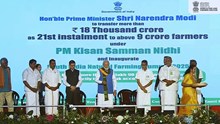
Sesame (Sesamum indicum L.), one of India’s oldest oilseed crops, plays a vital role in the agricultural economy of Madhya Pradesh and Chhattisgarh. Known for its high oil content and adaptability, sesame is cultivated widely across both states. These regions have seen the release of several improved varieties tailored to regional climatic and soil conditions. These varieties not only enhance yield and oil content but also offer disease resistance and improved seed quality, making them ideal for both domestic markets and export.
Prominent Sesame Varieties in Central India
TKG Series Varieties
The TKG series, developed to meet the challenges of rainfed and semi-rabi conditions, includes some of the most popular white-seeded sesame types.
-
TKG-21
Released in 1993, TKG-21 matures in about 85–90 days and yields between 650–700 kg/ha. It is tolerant to bacterial leaf spot and Alternaria leaf spot, and features moderate capsule formation, contributing to yield stability.
-
TKG-22
Introduced in 1995, this variety also matures in 82–85 days with similar yields. TKG-22 is recognized for its resistance to Phytophthora blight and superior seed retention due to well-structured capsules.
-
TKG-55
Released in 1999, TKG-55 features a compact plant structure and uniform maturity, making it suitable for efficient harvesting. It is also tolerant to Phytophthora blight and matures in about 82–85 days.
-
TKG-306
This high-yielding variety, introduced in 2006, produces 700–800 kg/ha. It matures in 86–90 days and is known for its strong resistance to a wide range of diseases including Phytophthora, Phyllody, Macrophomina, Cercospora, Powdery mildew, and Alternaria leaf spot.
-
TKG-308
Released in 2008, TKG-308 shares a similar maturity window (85–90 days) and yield potential (700–750 kg/ha). It is also resistant to multiple pathogens and features strong adaptability.
JTS and PKDS Series Varieties
-
JTS-8
A white-seeded variety released in 2001, JTS-8 matures in 82–85 days. Its alternate capsule arrangement and hairy flowers make it distinct. It offers resistance to Macrophomina, Alternaria leaf spot, and Phytophthora blight.
-
PKDS-8 (Jawahar Til-14)
A black-seeded variety introduced in 2010, PKDS-8 yields 700–750 kg/ha and matures in 85–88 days. It is especially valued for its tolerance to capsule borer and its uniform maturity.
-
PKDS-11 (Jawahar Til-11 – Venkat)
Released in 2006, this dark brown-seeded variety matures early (82–85 days) and shows resistance to Macrophomina. Its compact plant structure is advantageous for mechanized harvesting.
-
PKDS-12 (Jawahar Til-12)
A white-seeded variety introduced in 2008, PKDS-12 matures in 82–85 days and yields 700–750 kg/ha. It is known for its resistance to Macrophomina and stable yield due to uniform capsule distribution.
Best Practices for Sesame Cultivation
Soil and Climate Requirements
Sesame performs best in well-drained sandy loam or medium-textured soils. The ideal temperature range for growth is between 25°C and 35°C. While the crop is drought-tolerant, it is sensitive to both high temperatures above 40°C and low temperatures below 15°C, which can negatively affect oil content and yield. Waterlogging is particularly harmful and must be avoided. In Madhya Pradesh and Chhattisgarh, well-distributed rainfall during the Kharif season supports optimal growth.
Sowing Season and Plant Spacing
-
Kharif Season: Sowing is recommended in the first week of July with a spacing of 30 × 10–15 cm.
-
Semi-Rabi Season: Late August to early September is ideal, with spacing of 30 × 15 cm.
-
Summer Season: Sowing from the second to last week of February is advised, also at 30 × 15 cm spacing.
Seed Rate and Treatment
The recommended seed rate is 5 kg/ha for broadcasting and 2.5–3 kg/ha for row sowing. To protect seeds from early fungal and bacterial attacks, treat them with Thiram (2 g/kg) and Carbendazim (1 g/kg), and spray Agrimycin-100 (0.025%) to control bacterial leaf spot.
Fertilization and Nutrient Management
Fertilizer application should be tailored to the season:
-
Rainfed Conditions: 40:30:20 kg/ha of N:P:K
-
Summer Crops: 60:40:20 kg/ha of N:P:K
Supplementing with Zinc Sulfate (25 kg/ha) every three years helps maintain micronutrient balance, while Sulfur (15–20 kg/ha) enhances oil quality.
Weed and Pest Control
The first 40 days after sowing are critical for weed management. Hand weeding at 15–20 days, followed by mechanical hoeing at 30–35 days, ensures better moisture conservation and crop health. Pendimethalin (1 kg a.i./ha) applied as a pre-emergence herbicide helps control early weed growth.
Pests such as leaf rollers and capsule borers can be managed using Neem Seed Kernel Extract (5 g/l) or Quinalphos 25 EC (1.5 ml/l). Gall fly infestations should be treated with Dimethoate (1.5 ml/l).
For diseases like powdery mildew, spraying Carbendazim (0.1%) or Wettable Sulfur (0.2%) is effective. Phyllody disease can be minimized by choosing resistant varieties such as JTS-8, TKG-306, and PKDS-12.
Comparative Overview of Key Varieties
|
Variety |
Seed Color |
Capsule Type |
Disease Resistance |
Notable Features |
|
TKG-21 |
White |
Moderate formation |
Bacterial & Alternaria leaf spot |
Adapted to semi-rabi conditions |
|
TKG-22 |
White |
Well-structured |
Phytophthora blight |
High seed retention |
|
TKG-55 |
White |
Compact structure |
Phytophthora blight |
Uniform maturity |
|
JTS-8 |
White |
Alternate arrangement |
Macrophomina, Alternaria, Phytophthora |
Non-hairy capsules |
|
TKG-306 |
White |
Alternate type |
Multi-disease resistance |
Blue-white flowers aid pollination |
|
TKG-308 |
White |
Clustered capsules |
Cercospora, Phytophthora, Macrophomina |
Strong adaptability |
|
PKDS-8 |
Black |
Single alternate |
Capsule borer |
High market value |
|
PKDS-11 |
Dark Brown |
Compact capsules |
Macrophomina |
Ideal for mechanized harvesting |
|
PKDS-12 |
White |
Uniform distribution |
Macrophomina |
Stable high yield |
Sesame cultivation in Madhya Pradesh and Chhattisgarh is strengthened by a range of improved varieties under the TKG and PKDS series. These varieties offer a winning combination of yield potential, oil content, disease resistance, and adaptability to diverse growing conditions. By following region-specific cultivation practices—from seed treatment to pest management—farmers can achieve enhanced productivity and better economic returns, helping reinforce sesame’s position as a key oilseed crop in the region.
















